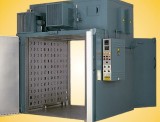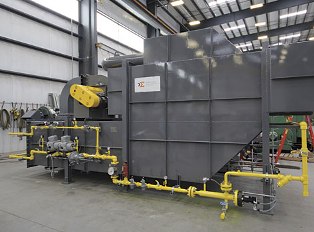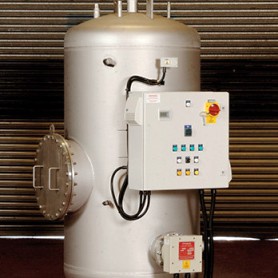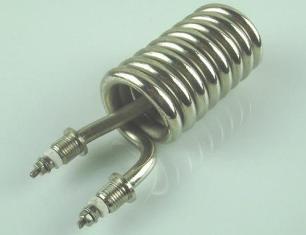Classification of electric heating installations
 Obtaining heat from electricity is possible according to two fundamentally different schemes:
Obtaining heat from electricity is possible according to two fundamentally different schemes:
1) under a direct conversion scheme, when Electrical energy (the energy of various forms of movement of charged particles in an electric field) turns into thermal (energy of thermal vibrations of atoms and molecules of substances),
2) according to an indirect conversion scheme, when electrical energy is not directly converted into thermal energy, but is used to transfer heat from one environment (heat source) to another (heat consumer), and the temperature of the source can be -lower than the user's temperature.
Depending on the class of heated materials (conductors, semiconductors, dielectrics) and the methods of exciting an electric current or field in them, the following methods of electric heating are distinguished: resistance (resistive), electric arc, induction, dielectric, electronic, light (laser ).
Any of the electric heating methods can be direct or indirect.
Direct heating electricity is converted into thermal energy in the heated medium (body) itself, in which an electric current is excited (certain forms of movement of charged particles).
With indirect heating, the conversion of electrical energy into thermal energy takes place in special converters - electric heaters, and then from them, by means of thermal conduction, convection, radiation or a combination of these methods, it is transferred to the heated environment.
In fact, electric heating of the material — this is direct heating according to the direct conversion scheme.
The scheme for indirect conversion of electrical energy into heat is implemented in electric heat pumps and heat transformers. So far, it is not widespread, but it has great prospects for development.
For electric heating of various media and materials, electrothermal equipment is used, including various electric heaters and electric heating installations.
An electric heater (electric heater) is a heat source that converts electrical energy into heat. In accordance with the methods of electric heating, electric heaters with resistance, induction (inductors), dielectric (capacitors) and others are distinguished.
An electric heating installation is a unit or equipment that includes electric heaters, a working chamber and other elements connected in one structural complex and designed to perform one technological process.

Electric heating installations are classified according to the method of electric heating (resistance, electric arc, induction, dielectric, etc.), purpose (electric furnaces, boilers, boilers, etc.), the principle of heating (direct and indirect), the principle of operation ( intermittent and continuous operation), current frequency, method of heat transfer from heaters to heated medium, operating temperature (low, medium, high temperature), supply voltage (low voltage, high voltage).
Read more about the main methods and methods of converting electrical energy into thermal energy here: Electric heating methods
The main parameters of electric heating installations include thermal power, supply voltage, current frequency, efficiency, power factor (cosφ), basic geometric dimensions.
Obtaining hot water and steam — one of the most common applications of electrical energy in production and agriculture, especially in animal husbandry. Without contaminating the air and premises with combustion products and waste, electric heating meets zootechnical and sanitary-hygienic requirements to the greatest extent. In many cases, this is also the most economical way to obtain hot water and steam, which does not require costs for transporting fuel, building and operating boiler rooms.
The industry produces a variety of equipment for heating water and generating steam, which is constantly ready to work under operational conditions and requires minimal maintenance costs.

Electric water heaters and electric boilers They are classified according to the heating method, heating principle (direct, indirect), working principle (periodic, continuous), working temperature, pressure, supply voltage.
Boilers usually work at atmospheric pressure and are designed to produce hot water with a temperature of up to 95 ° C. Hot water boilers work at excess pressure (up to 0.6 MPa) and allow the production of water with a temperature above 100 ° C. Electric steam boilers produce saturated steam with a pressure of up to 0.6 MPa.
Elementary boilers work on the principle of indirect electric heating of water with the help of heating elements. They have sufficient electrical safety in operation and are widely used to heat water directly at the points of its consumption.

Electrode water heaters They work on the principle of direct heating: the water is heated by an electric current flowing through it, powered by electrodes. Electrode systems (electrode heaters) are simpler, cheaper and more durable than heating elements.
Electrode produced hot water and steam electric boilers. Electrode heating provides boilers with simplicity of design and power regulation, high reliability and service life, high energy efficiency. Boilers are produced for low (0.4 kV) and high (6 — 10 kV) voltage and power from 25 to 10,000 kW per unit.
